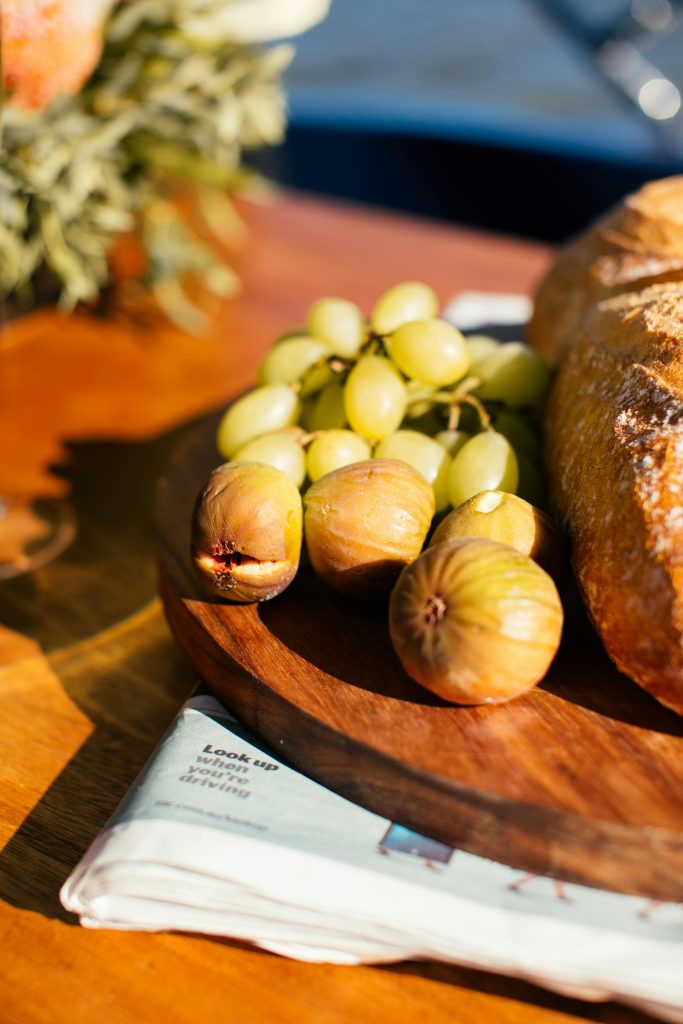As the sun breaks beyond the horizon and the first rays of light spill through the window, nothing heralds the dawn of a new day quite like the rich aroma of freshly ground coffee. This is where the humble coffee grinder takes center stage in any coffee aficionado’s morning ritual. More than just a kitchen appliance, the coffee grinder is an alchemist’s tool, turning the mundane task of grinding beans into an avenue for flavor exploration and a journey towards the perfect cup. With countless varieties of grinders available, from manual burr grinders to electric blade versions, each offers a unique path to unlocking the flavor potential nested within coffee beans. The significance of a good grinder cannot be overstated; it’s the cornerstone for extracting the maximum flavor, ensuring consistency, and tailoring the grind to the brewing method of choice.
Yet, many coffee lovers grapple with the challenging choice of selecting the ideal grinder that suits their lifestyle and budget. A subpar grinder can lead to uneven grind sizes, which in turn can ruin the extraction process, leaving you with a brew that tastes either over or under-extracted. A superior grinder solves these problems, providing precision and convenience wrapped in one. It elevates the simple act of brewing coffee into a gastronomic event, each cup a testament to the art of coffee making. The quest for the quintessential coffee grinder is thus not just about getting a gadget; it’s about investing in mornings transformed by a masterpiece in a mug.
Amazon Basics Electric Coffee Grinder, Coffee Bean and Spice Grinder, With Heavy-Duty Stainless Steel Grind Blades
Function of a Coffee Grinder
A coffee grinder is an essential device that prepares coffee beans for brewing by crushing them into small, consistent particles, allowing for optimal extraction of flavors during the brewing process. The primary function is to convert whole coffee beans into grounds whose size can be varied according to the brewing method used. For instance, espresso machines require very fine particles, while a French press needs coarser grounds. A uniform grind ensures even exposure to hot water, which is crucial for a balanced taste. Moreover, freshly ground coffee is paramount as it retains more aromatics and flavors compared to pre-ground coffee, which tends to stale quickly due to oxidation.
Uses of Coffee Grinder
Coffee grinders are used in a variety of settings, from homes to cafes and restaurants, fitting the needs of casual drinkers to connoisseurs. They serve not just for making traditional brewed coffee but are also indispensable for other coffee-based beverages like espresso, cappuccino, and lattes. Beyond coffee preparation, they can be used for grinding spices, herbs, and nuts, demonstrating their versatility in a kitchen setup. For example, chefs might use a coffee grinder to create a fine powder of spices for their recipes. However, one should avoid cross-contamination by dedicating a grinder specifically for coffee to preserve its flavor profile.
Design of Coffee Grinder
Coffee grinder design varies significantly between models, with aesthetics ranging from modern to retro. They come in different shapes and with various types of grinding mechanisms such as blade or burr systems. Blade grinders use a spinning blade to chop beans, similar to a blender, often resulting in uneven grounds. On the other hand, burr grinders crush beans between two revolving abrasive surfaces, resulting in a more uniform and consistent grind. Additionally, many grinders come with adjustable settings allowing the user to fine-tune grind size to their preference. There are manual grinders that require hand-cranking, which appeal to tradition and those seeking a more interactive experience, and electric grinders that provide convenience and speed.
Build Quality of Coffee Grinder
Build quality is a pivotal factor that affects the durability and performance of a coffee grinder. High-quality grinders are typically constructed with sturdy materials like stainless steel, ceramic, or hardened plastic. Durability ensures that the grinder not only withstands the mechanical force during grinding but also maintains precision over time. Premium models often feature high-quality burrs that remain sharp for an extended period, providing consistent grinds with each use. Moreover, a solid build reduces the noise level during operation. For instance, high-end grinders may use noise-dampening technology to create a more pleasant user experience.
Primary Features of Coffee Grinder
The primary features of a coffee grinder include adjustable grind settings, which allow users to switch between fine to coarse grinds; a hopper for storing beans before grinding; and a dosing feature to control the amount of coffee being ground. More advanced grinders have programmable settings for different brew methods and can save preferences for future use. Some feature built-in scales for precise dosing, ensuring that each cup of coffee has the perfect strength and flavor. Others include anti-static technology to reduce the mess created by static-charged coffee grounds. For example, premium burr grinders may also have a feature to minimize heat generation during grinding to protect the coffee’s natural oils and aromas. These features collectively contribute to the coffee grinder’s capacity to provide a high-quality coffee brewing experience.
Recommended Coffee grinder
“`html
| Pros of Coffee Grinders |
|---|
| Freshness and Flavor: Freshly ground coffee has a superior flavor and aroma compared to pre-ground coffee, enhancing the overall user experience. |
| Customization: Users can adjust the grind size according to their preferences and the brewing method, which allows for a customized cup of coffee. |
| Consistency: A quality coffee grinder delivers consistent particle size, which is crucial for the extraction process and therefore the taste of the coffee. |
| Variety: Owning a grinder allows users to experiment with different types of coffee beans, providing a wider range of flavor experiences. |
| Cost-Effective: Over time, buying whole beans and grinding them at home can be more cost-effective than purchasing pre-ground coffee. |
| Cons of Coffee Grinders |
|---|
| Initial Cost: High-quality coffee grinders can be a significant initial investment, which may not be suitable for all budgets. |
| Maintenance: Grinders require regular cleaning and maintenance to keep them working properly, which can be time-consuming. |
| Noise: Many grinders are quite loud during operation, which can be disruptive, especially in the morning or in quiet environments. |
| Learning Curve: Understanding the correct grind size for different brewing methods might be complicated for beginners. |
| Space: Some grinders can be bulky and consume valuable counter space in smaller kitchens. |
“`
Top 10 rated Coffee grinder
Types of Coffee Grinders
When choosing a coffee grinder, the first aspect to consider is whether you prefer a blade or burr grinder. Blade grinders are typically more affordable and work by chopping the beans with spinning blades. While convenient and budget-friendly, blade grinders often produce uneven grinds, affecting the flavor of your coffee. On the other hand, burr grinders crush beans between two abrasive surfaces, called burrs, which allows for more consistent grinds and customizable settings. The grind uniformity from burr grinders typically results in superior-tasting coffee. However, they are usually more expensive than blade grinders.
Grind Size and Consistency
A crucial factor in grinder selection is the grind size and consistency. Different brewing methods require different grind sizes; for example, espresso requires a fine grind, while French press requires a coarser grind. Look for a grinder with multiple grind settings that can provide the versatility you need. Burr grinders generally offer a wide array of settings and consistent grind sizes. Consistency is critical as it ensures the even extraction of flavor during the brewing process, leading to a well-balanced cup of coffee.
Manual vs. Electric Grinders
Deciding between manual and electric grinders is a question of convenience versus portability. Manual grinders, operated by hand cranks, are typically more portable and don’t require electricity. They’re an excellent choice for those who enjoy the hands-on approach to coffee-making or need a grinder on the go. Electric grinders, while less portable, offer the convenience of grinding at the push of a button and tend to be faster and more efficient, saving time for daily use.
Durability and Build Quality
The build quality of a coffee grinder matters for both longevity and performance. Grinders with high-quality components, such as stainless steel or ceramic burrs, tend to last longer and perform better. Look for a solid construction that can withstand frequent use. Cheaper models might save you money upfront but could cost more in the long run due to the need for replacements. Consider investing in a grinder with a good reputation for durability.
Capacity and Size
Consider how much coffee you typically make at one time. Coffee grinders come in various capacities, catering to individual needs. A smaller capacity grinder may suffice for personal use, while a larger one might be necessary for household or office scenarios. Additionally, take into account the physical size of the grinder, ensuring that it will fit comfortably in your kitchen space without crowding your countertop.
Additional Features
Some coffee grinders come with extra features that may be of interest. For example, some offer built-in scales, which can be convenient for achieving the perfect coffee-to-water ratio. Other grinders have timers, allowing you to replicate your preferred grind time for consistent results. Noise level can also be a consideration, with some grinders operating more quietly than others. Evaluate which additional features align with your preferences and whether they’re worth the potential increase in cost.
Noise Level
For many, the noise produced by a coffee grinder can be a deal-breaker, especially for early morning routines. Generally, manual grinders are quieter than electric ones. If noise is a concern, look for electric grinders that emphasize noise reduction in their design. Remember that burr grinders tend to be noisier than blade grinders, so weigh the importance of grind quality against noise level.
Maintenance
Cleaning and maintaining your coffee grinder is essential for optimal performance and longevity. Easy-to-clean models will save you time and effort. Some grinders allow for the removal of burrs or blades, providing better access to coffee residue. Additional tools such as cleaning brushes can also be helpful. Regular maintenance not only improves the quality of your grind but also prolongs the life of your grinder.”
Best choice for Coffee grinder in 2024
Amazon Basics Electric Coffee Grinder, Coffee Bean and Spice Grinder, With Heavy-Duty Stainless Steel Grind Blades
BLACK+DECKER One Touch Coffee Grinder, CBG110S,2/3 Cup Coffee Bean Capacity, Push-Button Control, Stainless Steel Blades
Finding the Right Coffee Grinder on Amazon
When looking for a coffee grinder on Amazon, start by using the search function. Type in “coffee grinder” to see a variety of options. Use filters such as brand, price, type (burr or blade), and customer ratings to narrow down your search.
It is important to read product descriptions carefully. Look for a grinder with adjustable settings if you enjoy different brewing methods. Burr grinders are generally more consistent than blade grinders and should be preferred if you’re serious about your coffee.
Don’t forget to check the customer reviews and answered questions to get insight into how well the grinder performs in daily use. Positive reviews are good, but also read negative reviews to see common problems users faced.
Choosing the Right Grinder
Consider the following features when choosing a coffee grinder:
- Type of Grinder: Do you want a burr or blade grinder? Burr grinders are generally seen as superior for consistent grind size.
- Grind Settings: More settings allow for more versatility in brewing methods. From fine (espresso) to coarse (French press), the grind size can make a big difference.
- Capacity: How much coffee do you need to grind at once? If you entertain or make several cups at a time, a larger capacity is helpful.
- Ease of Cleaning: Some grinders are easier to clean than others. Look for a model with detachable parts or one known for its easy cleanup.
- Price: Determine your budget and use the price filter to find grinders within your range. Be aware that sometimes a higher price can mean better quality and longevity.
Common Issues with Coffee Grinders
Consistency: A frequent problem with lower-quality grinders is inconsistent grind size, which can lead to poor tasting coffee.
Noise: Grinding coffee can be loud. Look for models that highlight noise reduction if this is a concern for you.
Durability: In reviews, check for any common mechanical issues or failures. A warranty can provide peace of mind.
Size and Footprint: Ensure that the grinder fits well in your kitchen space. Dimensions are typically listed in the product details.
Static and Mess: Some grinders are prone to static, which can cause grinds to stick to the grinder and create a mess. Look for models that address this issue.
Cheapest alternatives for Coffee grinder
“`html
FAQ for Coffee Grinder
What grind size should I use for my coffee brew method?
The grind size you should use depends on your brewing method. For example, a coarse grind is ideal for French press or cold brew, while a medium grind works well for drip coffee makers. Espresso machines typically require a fine grind for the best results.
How often should I clean my coffee grinder?
It’s recommended that you clean your coffee grinder at least once a week to ensure the best flavor and to prevent oil build-up, which can lead to rancidity and clogging.
Can I grind spices in my coffee grinder?
Some coffee grinders are versatile and strong enough to grind spices. However, this can cause cross-contamination of flavors. If you want to grind spices, it might be best to have a separate grinder dedicated to that purpose.
Is a burr grinder really better than a blade grinder?
Yes, a burr grinder is generally considered superior because it creates a more uniform grind size, which is crucial for flavor extraction and allows more control over the grind size compared to blade grinders.
Why is my coffee grinder making a loud noise?
Loud noises can be due to several issues, like a jammed grind chamber with coffee residue or foreign objects, dull or damaged burrs. If your grinder is excessively noisy, it’s advisable to check for obstructions and consider maintenance or professional help.
Does the material of the grinder’s burrs affect the quality of the grind?
The material can affect the grind quality. Stainless steel burrs are durable and sharp, while ceramic burrs tend to last longer and don’t heat up as much during grinding, which can protect the coffee’s flavor.
Can the fineness of the grind affect the taste of the coffee?
Yes, the fineness of the grind directly affects extraction during brewing. A grind that is too fine can result in over-extraction and a bitter taste, while a grind that is too coarse can lead to under-extraction and a weak, sour flavor.
How important is grind consistency and why?
Grind consistency is very important as it impacts the evenness of the extraction. Inconsistent grinds can lead to some particles over-extracting while others under-extract, resulting in an imbalanced cup of coffee.
Can I grind beans for a single cup of coffee?
Yes, most grinders allow you to adjust the amount of coffee you want to grind, so you can grind enough for just one cup or for several, depending on your needs.
What is the best way to store my coffee beans?
To preserve the freshness of your coffee beans, store them in an airtight container away from light, heat, and moisture. It is also best to grind coffee beans right before brewing rather than grinding in bulk to maintain flavor.
“`
In concluding this comprehensive review of our featured coffee grinder, it’s evident that this tool stands out as a valuable addition to any coffee aficionado’s arsenal. The grinder’s consistency in producing uniform ground coffee ensures that your beans release their full flavor profile, making every cup an indulgence. Its robust construction and user-friendly design exemplify the commitment to quality and convenience, streamlining your morning routine without compromising on taste.
Whether you prefer a fine grind for an aromatic espresso or a coarser one for your French press, the versatility of this grinder accommodates all preferences. Its quiet operation and easy-to-clean components mean that you can enjoy premium, freshly ground coffee without any hassle. Moreover, its durability promises longevity, making it not just a purchase but an investment for every coffee lover.
Investing in this coffee grinder means elevating your coffee experience, embracing the nuances of your favorite beans, and tailoring each brew to your liking. Don’t settle for pre-ground coffee that falls short on flavor when you can relish in the exceptional quality of a grind that’s tailored to your tastes. Make the switch to our recommended grinder and taste the difference in every cup.







